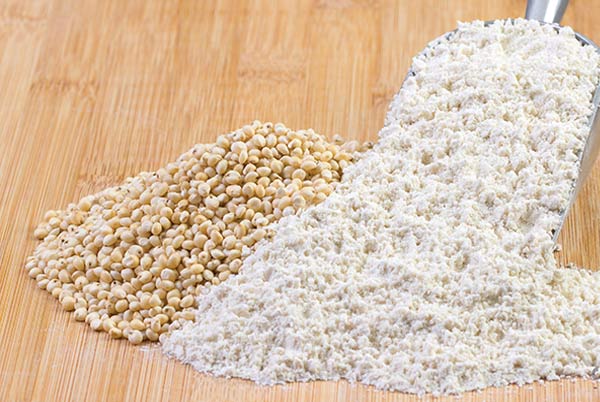
Sorghum 101: Get the scoop on an Ancient Grain
If you’re on a gluten-free diet, chances are you’ve heard of sorghum at one time or another. Though the popularity of sorghum has recently skyrocketed, it’s hardly the new grain on the block. Earl Roemer, President of Nu Life Market and one of the nation’s leading gluten-free sorghum farmers, gives us the exclusive scoop on this ancient grain.
Q: What exactly is sorghum?
A: Sorghum is an ancient grain. It is a small, round grain that is naturally gluten-free and in the USA it is non-GMO.
Q: Where did sorghum originate?
A: The first use of sorghum grain in food came from an archeological site, where it was found in clay pots, near the Egyptian-Sudanese border around 8,000 B.C. The first known record of sorghum in the USA apparently comes from Benjamin Franklin, who wrote about it being used to make brooms in 1757.
Q: When did sorghum production begin to take off in the USA?
A: In the 1920s as animal feed. It was most important in the arid regions of the USA because that gave an opportunity for the agricultural producers to grow a grain, feed their animals, and allow their families to survive economically in regions that would not normally produce high volumes of grains such as corn.
Q: Why do you think there has been an increase in the popularity of sorghum in recent years?
A: Consumers are demanding a product that really fits exactly what sorghum is all about. Sorghum is an ancient grain, it’s produced in high volumes, and it’s non-genetically modified and naturally gluten-free. In total, 100 million people consume grain sorghum across the world every day as their primary source of cereal grain.
Q: What are some of the uses of sorghum?
A: Up until the 1990s it was used for animal feed. Forage sorghums are used for hay. There is also sweet sorghum from which the juice can be squeezed, removed, and boiled down for sorghum syrups. It is also used for ethanol production. The growth in the gluten-free market and the need for food grain sorghums has also led us to place a much higher focus on the food types of sorghum.
Q: How does the composition of sorghum compare to that of other grains?
A: It is very diverse genetically. You can have white grain, red grain, or black grain, depending on what region in Africa the grain survived in. There’s no other grain that has the unique properties that grain sorghum has. Burgundy grain sorghum contains proanthocyanidins (like the same properties found in red wine) which we know to have anti-inflammatory characteristics. Some sorghums have about eight times the amount of antioxidants than in blueberries!
Q: How does growing sorghum differ from growing other grains, such as corn?
A: Its minimal use of water and natural resources is a huge benefit environmentally. On average, grain sorghum uses about 30% less water than it takes to produce the same volume of corn. It’s also a grain that can be economically grown at a lower price than some of the other gluten-free grains.
Q: What are some of the differences in sorghum flour versus other types of gluten-free flours?
A: When we talk about just the white sorghums compared to a rice flour, what we’ve found are better sensory characteristics such as not as much grittiness in the baked product. From a nutritional standpoint, you have more fiber, more iron, and more niacin.
Q: How did Nu Life Market get its start?
A: Nu Life Market was born out of consumer demand. As a fourth-generation agricultural producer, I saw the potential for developing a business producing very special sorghums. Over several years, I developed the processes to produce a gluten-free milled flour from those sorghums that performed better than other gluten-free grains and at a lower cost, which was also a benefit for the consumer.
Q: What does Nu Life Market do differently in growing and producing sorghum than other companies?
A: We control the product from the time the seed goes into the ground to the time it reaches the consumers. That has been a huge advantage for us in regard to providing our customers with trust that our grains are produced in a safe way and that there won’t be any cross contamination.
Q: What are your predictions for the future of sorghum?
A: It is all based on consumer demand for a product in this category and without a doubt we’re seeing huge growth in demand by the individual consumers, gluten-free bakeries, and also by the large multinational companies that see an opportunity in producing food products with sorghum flour as the base. The future is very, very bright.




Pingback: Gluten Free Biscuits Recipe | Simply Gluten Free
Pingback: Pumpernickel Bread and Homemade Butter | Simply Gluten Free